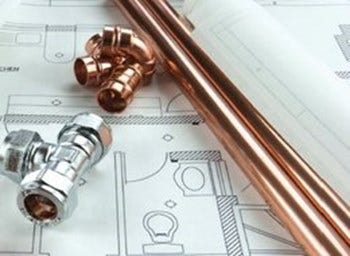Shopping cart
How to Install Water Pipes
July 22, 2022

Whether it is a remodel job or finishing a pre-built home, you will need to install water pipes. One type of tubing to use in the routing of water lines inside the house is the SmartFix water line system or red cop-per pipes. Both can handle water temperatures up to 95º C and have a long usable lifespan.
Step 1:
Turn off the water main to the house. Cutting into a pipe that has water pressure on it will result in a big mess.
Also make sure to open a few faucets to release pressure in the lines/pipes.
Step 2:
Determine where you will need to install the pipes. In case of a remodel that needs new pipes, identify both the ending point of the new pipe and where you will be joining it to the existing pipes.
Step 3:
Drill holes in the studs that will allow the placement of the new pipes. If a pipe is to run along an existing wall, you will need to drill holes in the studs of that wall to allow a pathway for the new pipe.
Step 4:
Build the entire pathway of your new pipe by using pieces of straight pipe and elbows and angles to turn corners. Direct the pipe to the source and to the exit points.
Step 5:
Form all the joints by cutting the pipe to length and positioning the angle or elbow to get to the next point in the path of the pipe. When the pipe is positioned and cut correctly, clean the tubing end and the inside of the elbow or angle with the correct cleaner.
Step 6:
Make sure all joints are tightly connected to the outlet at the source. Once the water is turned on, any leaks along the pathway will require cutting the pipe and installing a union to eliminate the leak.
Step 7:
Cut the tubing at the point in the existing piping where the new section will be placed. Measure from the cut back in either direction of the pipe and trim the tubing so that a Tee fitting can be placed in the pipe line.
Step 8:
Check every joint that has been made for integrity and close off the new end of tubing or place a bucket to catch the water when the water supply is turned back on. Turn the water back on. Look everywhere for any leaks. Once you have confirmed that there are no leaks in the system the task is completed.